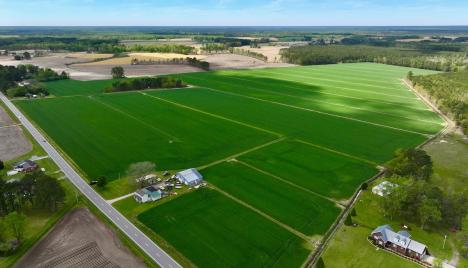Some days in the turkey woods are better than others. We all live for and relish those magical mornings when the treetops ring with the rattle of gobblers, and revile the days when the birds seem afflicted with a serious case of lockjaw. In the latter case, you have a couple options. One is to go old school: camp out in one spot, rapping on a box call every 30 minutes and hoping something slips in silently. The other is to strike out in search of a more willing adversary. One variation of this running and gunning style that can be quite effective on reticent birds is called trolling.
The basic technique involves traveling along slowly and steadily, stopping at regular intervals and throwing a call in hopes of a response.
Plan Your Route - Try to take a path that will bring you through several areas known to hold birds. Transmission line rights-of-way provide an ideal route as they usually have trails or roads that are easy to travel, tend to be relatively straight and often cross roads making for easy access.
Take Your Time - The object is to cover as much ground as possible but don’t rush. Move along slowly and quietly enough that you’ll be able to hear a distant bird should it volunteer a courtesy gobble.
Pause for the Cause - As you travel along, stop every 100 - 200 yards and call. Shock calls like crows, woodpeckers and hawks are often a better option as you can get a response without giving up your location. This allows you to move closer or move to a better setup position before you begin calling the bird in. If you get no response, try a turkey call, but be ready to set up quickly if you get a reply.
Watch Your Backtrail - Turkeys have an uncanny ability to find the precise location of a call from a long way off. Even if they don’t answer, they may still come to investigate after you’ve moved on.
Work Backwards - For the same reason, when you’ve finished your route, turn around and follow it back. And don’t get lax. It may take a few minutes or it might take an hour but if a gobbler is inclined, he’ll make his way to where he heard you calling from and chances of crossing paths may be even better on your return route.
-Bob Humphrey






